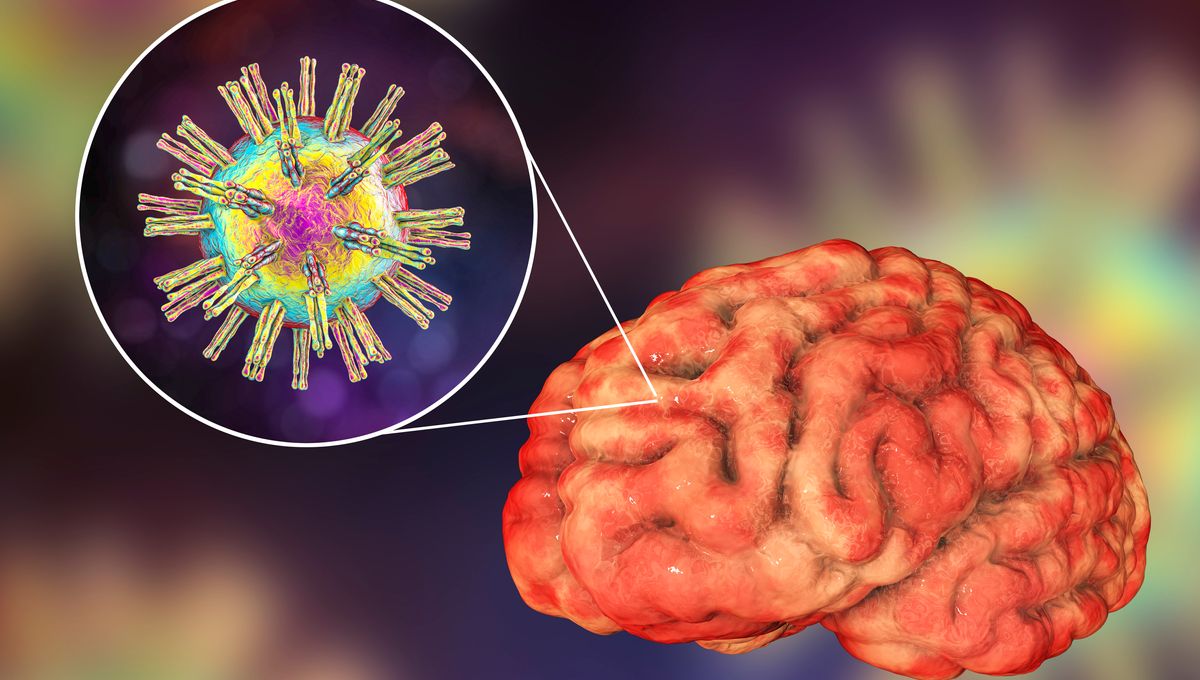
Herpes simplex virus type 1 (HSV-1) is normally associated with cold sores – they can be annoying and unsightly, but for otherwise healthy adults they’re not normally a serious threat. However, it seems we might have to take a second look at this virus as a growing body of evidence suggests that it can make its way inside the brain. A new study is among the first to understand how it gets there, and what it might be doing to the central nervous system.
Infiltrating the nervous system is actually quite on-brand for herpesviruses. We know that HSV-1 first infects mucosal membranes around the mouth (hence the cold sores) or genitals before effectively setting up camp in clusters of nerve cells called peripheral ganglia. These are like bridges between the peripheral and central nervous systems, and the virus can lie dormant there for long periods of time.
Once someone is infected with HSV-1, they have it for life. Some people may get flare-ups of symptoms periodically; others may never develop symptoms at all. The virus is exceptionally common – data published in 2015 by the World Health Organization suggested that 67 percent of the global population under the age of 50 were infected.
Humanity has a very long history with herpes, and until quite recently, HSV-1 infection was considered a manageable problem for most people. However, research has begun to show that as well as getting into the peripheral nervous system, the virus has the potential to find its way into the brain itself – and that could mean storing up some more serious issues.
In rare cases, when someone is first infected with HSV-1, the virus can migrate to the brainstem and cause HSV encephalitis, potentially fatal inflammation of brain tissues. However, there have also been cases where evidence of the virus has been found in the brain post-mortem when the person had no history of encephalitis, suggesting that sometimes it can infiltrate silently.
Findings from animal models, human tissues, and population studies have suggested that this type of chronic HSV-1 infection may be in some way linked to the development of Alzheimer’s disease, after debate had raged on this question for several decades.
“Recently, this common virus has been implicated in neurodegenerative diseases, such as Alzheimer’s disease, but no clear route of central nervous system invasion has been established,” said Dr Christy Niemeyer, an assistant professor of neurology at the University of Colorado Anschutz Medical Campus and co-first author of the new study, in a statement.
“Identifying how HSV-1 can get into the brain and what brain regions are vulnerable is key in understanding how it initiates disease.”
That’s exactly what Niemeyer and co-authors set out to do. In a mouse model, the team examined how HSV-1 spreads within the brain in cases with and without encephalitis, focusing on two routes of entry: via the brainstem, and via the olfactory nerve.
They discovered that HSV-1 can spread to a variety of brain regions, including the expected brainstem regions but also the midbrain and hypothalamus; however, it typically leaves other regions, like the hippocampus, untouched. The virus’s entry into the brain triggers an inflammatory response in microglia – vital cells in the brain’s immune system – which can persist after the virus is no longer detectable.
“Identifying the role of microglia provides helpful clues to the consequences of HSV-1 infection, and how it triggers neurological diseases,” said Niemeyer. “Persistently inflamed cells can lead to chronic inflammation, a known trigger for a number of neurological and neurodegenerative diseases.”
The results provide a platform for future study of how this common virus could impact various brain functions, even in cases where dangerous acute inflammation is not observed: “Even though the presence of HSV-1 is not causing full-blown encephalitis in the brain, it can still affect how these regions function,” Niemeyer explained.
“This research offers important takeaways in better understanding how viruses interact with overall brain health as well as the onset of pervasive neurological diseases.”
The study is published in the Journal of Virology.
Source Link: How The Cold Sore Virus (That You Probably Have) Silently Invades The Human Brain